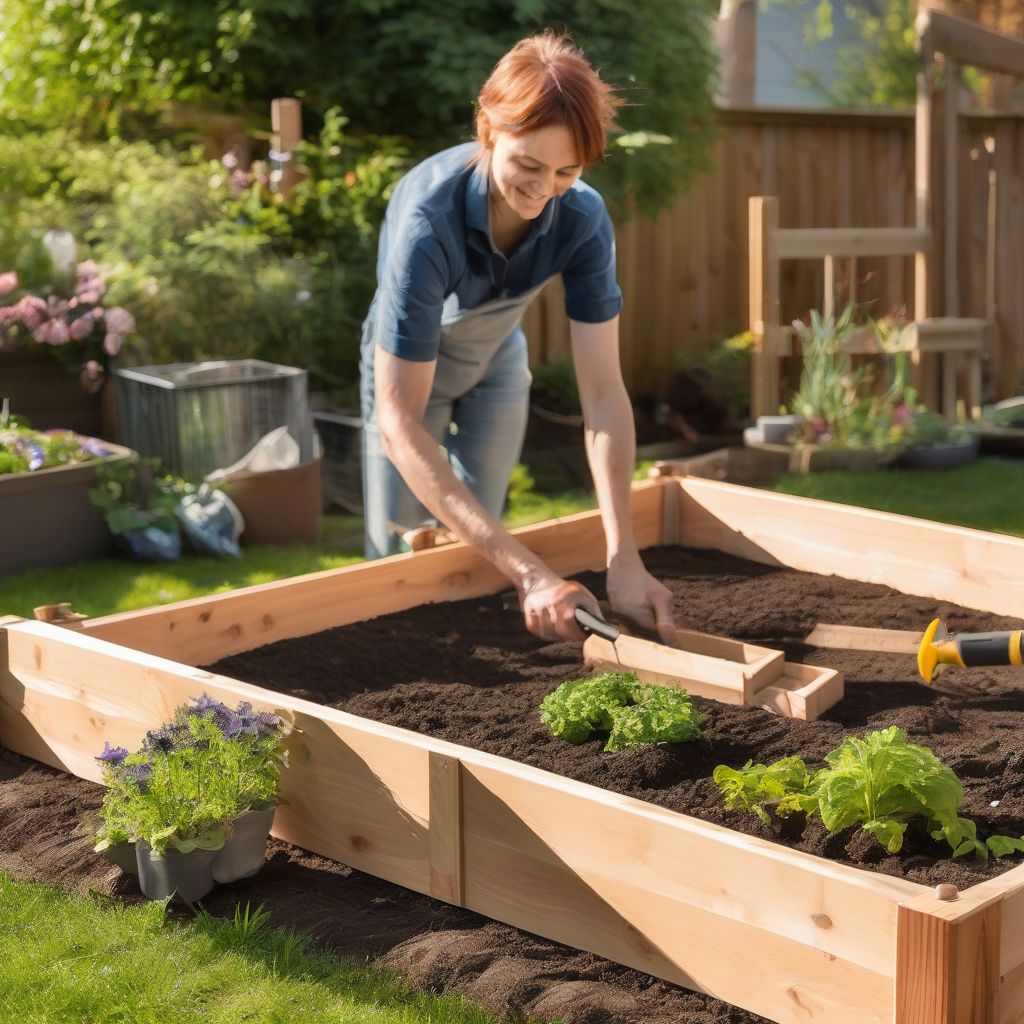Have you ever dreamed of biting into a sun-ripened tomato, still warm from the vine, knowing it’s bursting with flavor and free from harmful chemicals? That dream can become a reality with a raised bed organic garden. Even if you’re a beginner, creating your own thriving patch of organic goodness is more achievable than you might think. This guide will walk you through everything you need to know, from choosing the right location to harvesting your first organic bounty.
Planning Your Raised Bed Garden
Before you even pick up a shovel, careful planning is crucial for a successful raised bed organic garden. This involves considering the following:
Location, Location, Location
Choosing the right spot is paramount. Your garden needs at least 6-8 hours of direct sunlight daily for optimal growth. Observe your yard throughout the day to pinpoint the sunniest area. Also, ensure the location is near a water source for easy watering. A relatively level area will make building and maintaining your raised beds simpler.
Size and Material
The size of your raised beds depends on your available space and desired yield. Common dimensions are 4×8 feet, but you can customize them. Consider your physical limitations as well, ensuring comfortable reach across the bed for planting and weeding.
For materials, untreated cedar or redwood are naturally rot-resistant and excellent choices. Pressure-treated lumber is more affordable but contains chemicals, which can leach into your soil over time. If using pressure-treated wood, line the inside of the beds with a barrier to prevent contact with the soil.
 Building a Raised Bed Organic Garden
Building a Raised Bed Organic Garden
Soil Selection
Choosing the right soil is the cornerstone of organic gardening. Opt for a high-quality organic potting mix, specifically designed for raised beds. Avoid using garden soil directly from your yard, as it might contain weeds, pests, or diseases. A good mix contains a blend of compost, peat moss, and vermiculite for optimal drainage and nutrient retention.
Building Your Raised Beds
Once you’ve finalized your plan, it’s time to build! The process is straightforward:
Assembling the Frame
Construct the frame using your chosen material, joining the boards with screws or nails. Reinforce the corners with brackets for added stability.
Preparing the Base
Lay down a layer of cardboard or landscape fabric at the bottom of the frame to suppress weeds and prevent them from competing with your vegetables.
Filling the Beds
Fill the beds with your chosen organic potting mix. Aim for a depth of at least 12 inches to allow for adequate root development, especially for root vegetables like carrots and potatoes.
Planting Your Organic Garden
Now for the fun part! Select plants that thrive in your climate and suit your preferences.
Choosing the Right Plants
Consider the season and choose vegetables, herbs, or flowers accordingly. Companion planting, where certain plants are grown together to benefit each other, can enhance your organic garden’s success. For instance, basil repels insects that can harm tomatoes, making them excellent companions.
Starting Seeds or Transplants
You can start your plants from seeds indoors a few weeks before the last frost or purchase seedlings from a local nursery. Ensure you choose certified organic seedlings to maintain the integrity of your organic garden.
Planting Techniques
Space your plants according to their individual needs. Overcrowding can lead to competition for resources and hinder growth. Gently place the seedlings into the soil, ensuring the roots are well-covered. Water thoroughly after planting.
Maintaining Your Organic Garden
Maintaining a healthy organic garden requires ongoing effort:
Watering
Water your garden regularly, especially during dry spells. Aim for consistent moisture, but avoid overwatering, which can lead to root rot. Mulching with organic materials like straw or wood chips helps retain moisture and suppress weeds.
Fertilizing
Replenish nutrients by using organic fertilizers such as compost tea or aged manure. Avoid synthetic fertilizers, which are not permitted in organic gardening.
Pest and Disease Control
Monitor your plants for signs of pests or diseases. Utilize organic methods like introducing beneficial insects or using natural sprays to combat problems. Crop rotation can also help prevent the buildup of pests and diseases.
Harvesting Your Organic Bounty
The moment you’ve been waiting for! Harvest your vegetables, herbs, or flowers at their peak ripeness for the best flavor and nutritional value.
Harvesting Tips
Follow specific harvesting guidelines for each plant. Some, like tomatoes, are best harvested when fully ripe, while others, like zucchini, are best picked when smaller and tender.
 Harvesting Fresh Organic Vegetables
Harvesting Fresh Organic Vegetables
Conclusion
Starting a raised bed organic garden can be a rewarding experience, connecting you with nature and providing fresh, healthy food for you and your family. By following these steps and embracing the principles of organic gardening, you can cultivate a thriving garden that brings you joy and nourishes your body. So, roll up your sleeves, get your hands dirty, and embark on this fulfilling journey! What are your favorite organic vegetables to grow? Share your thoughts and experiences in the comments below! We’d love to hear from you. Consider also exploring our other gardening resources to further enrich your organic gardening knowledge.



